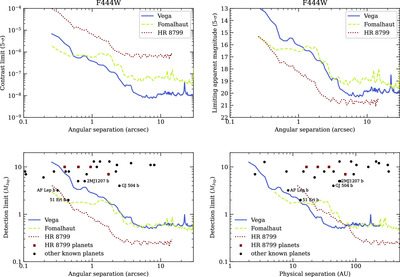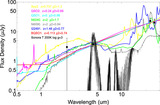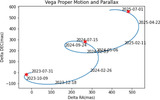Image Details

Caption: Figure 9.
(Top left) contrast curves (5σ) for Vega, Fomalhaut (M. Ygouf et al. 2024), and HR 8799 (G. Bryden et al. 2024). The differences are consistent with the brightness of the host star and the observation parameters as discussed in the text. (Top right) limiting magnitudes toward each star. (Bottom left) limiting mass sensitivity curves as a function of angular separation for the three stars using BEX models (E. F. Linder et al. 2019). A selection of directly imaged planets with model masses < 13 M J from the NASA Exoplanet Archive are plotted as black circles; the four HR 8799 planets are highlighted as red squares. For HR 8799 the region interior to HR 8799 b (1.″7, 80 au) is omitted to recognize the four high-mass planets found interior to this separation. The bump in the Vega curve at 175 au shows the edge of the coronagraphic mask. (Bottom right) same as for the bottom left panel but plotted as a function of physical separation. The mass curves and the points for HR 8799 are corrected for projection effects—5° inclination for Vega (J. D. Monnier et al. 2012), 67° for Fomalhaut (A. Gáspár et al. 2023), and 26° for HR 8799 (B. Matthews et al. 2014).
Copyright and Terms & Conditions
© 2024. The Author(s). Published by the American Astronomical Society.












